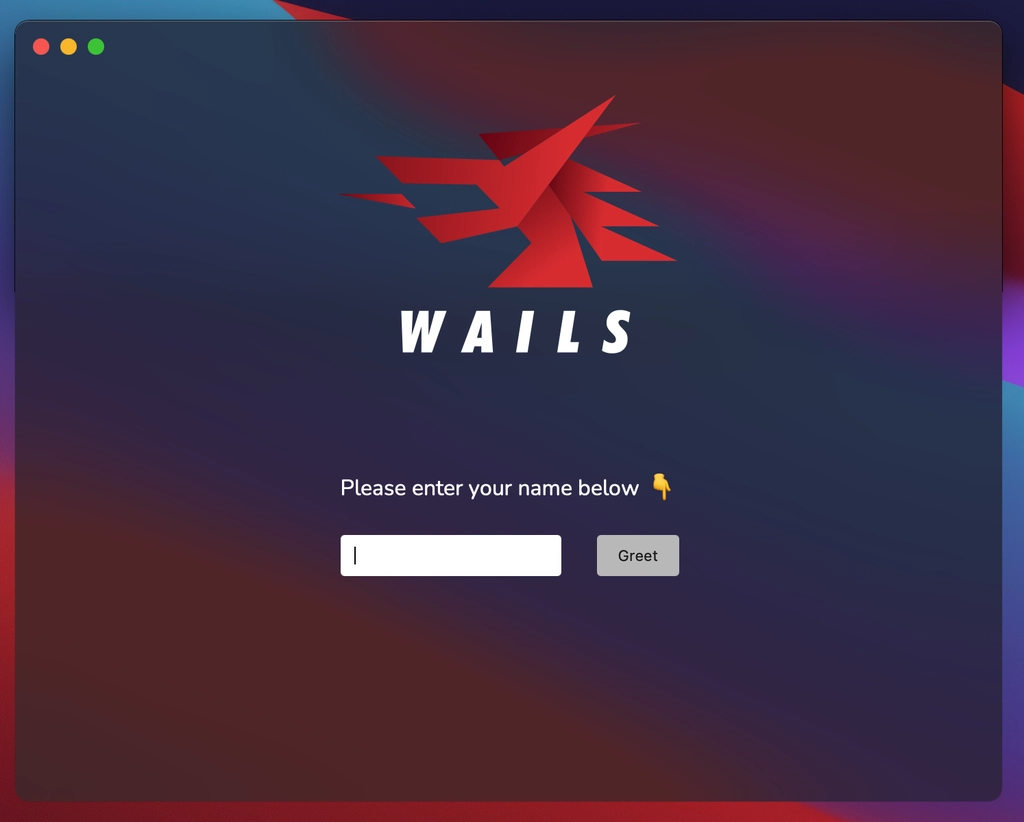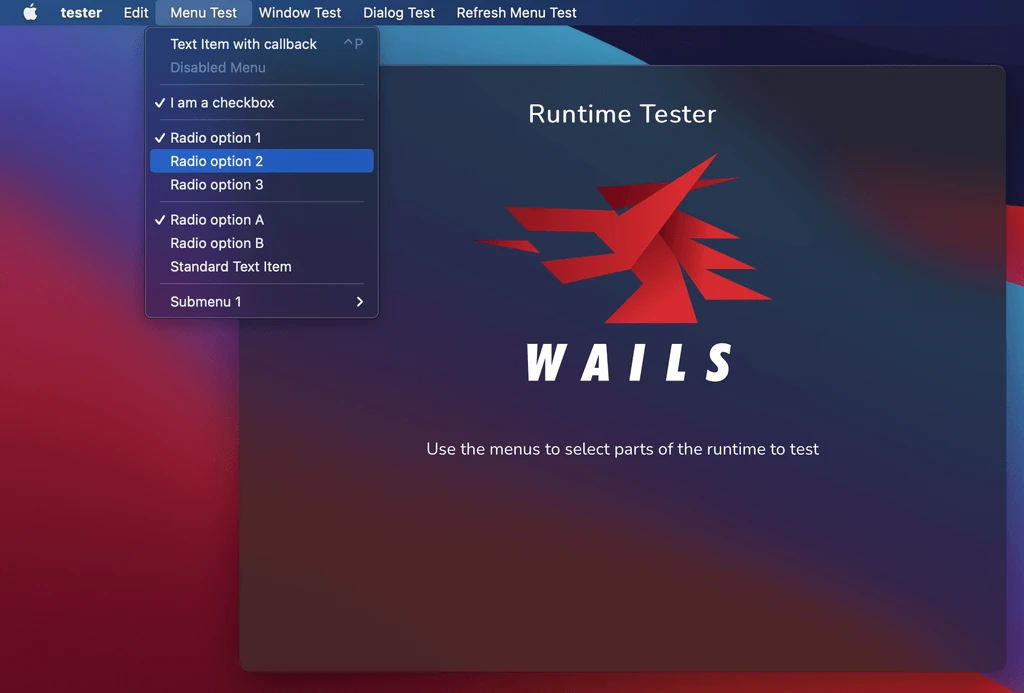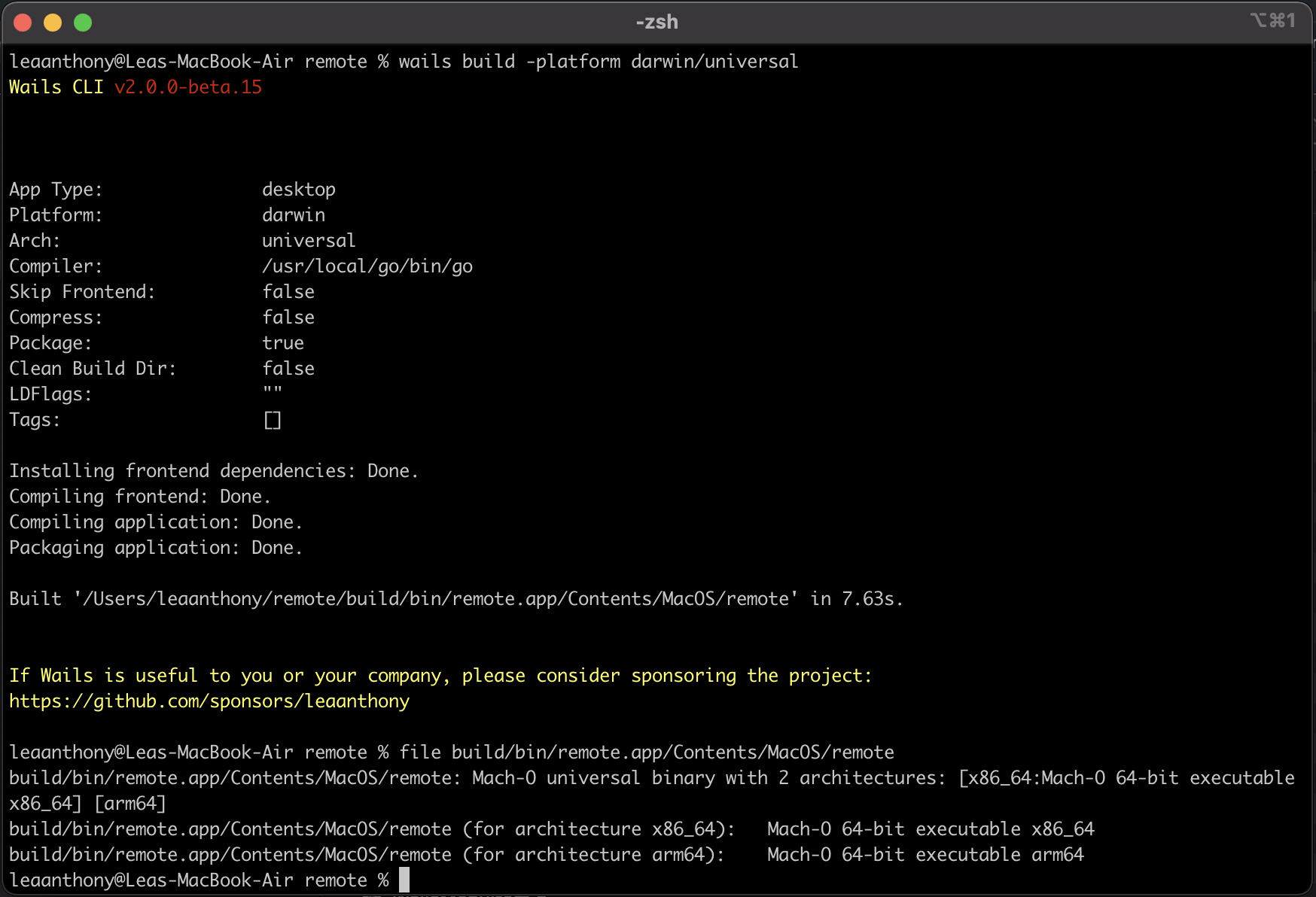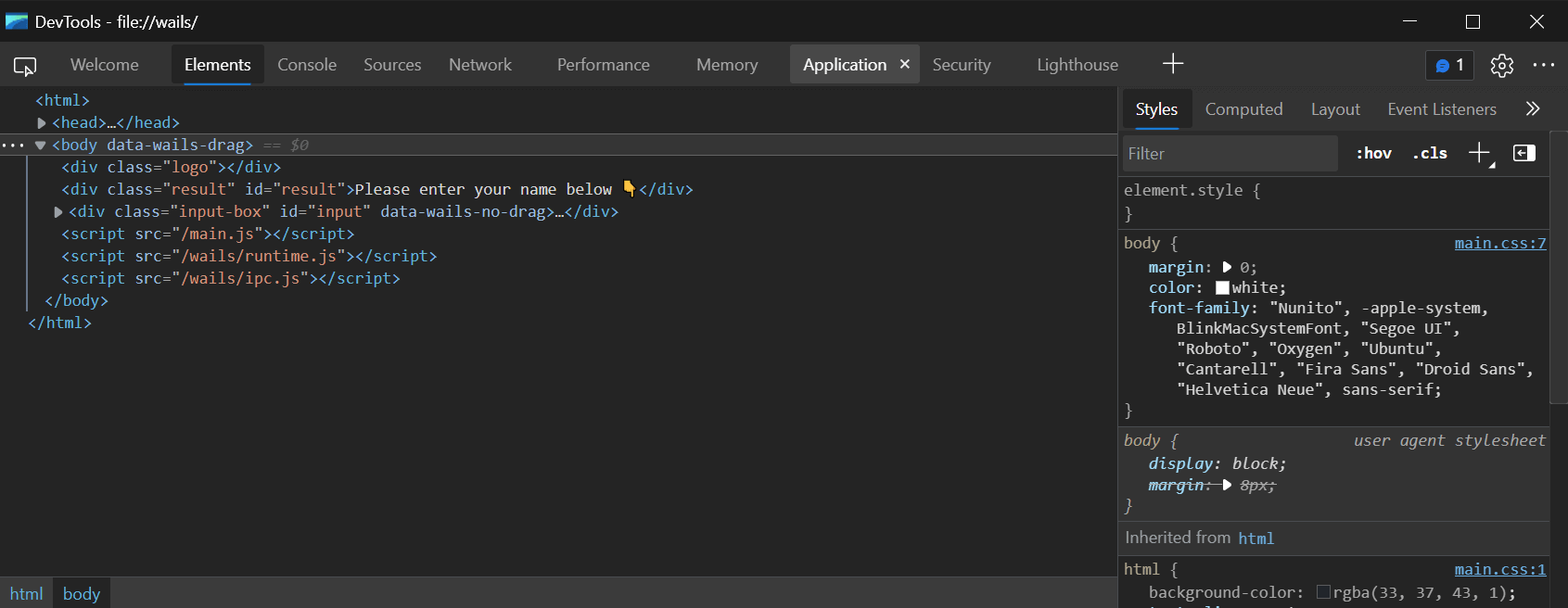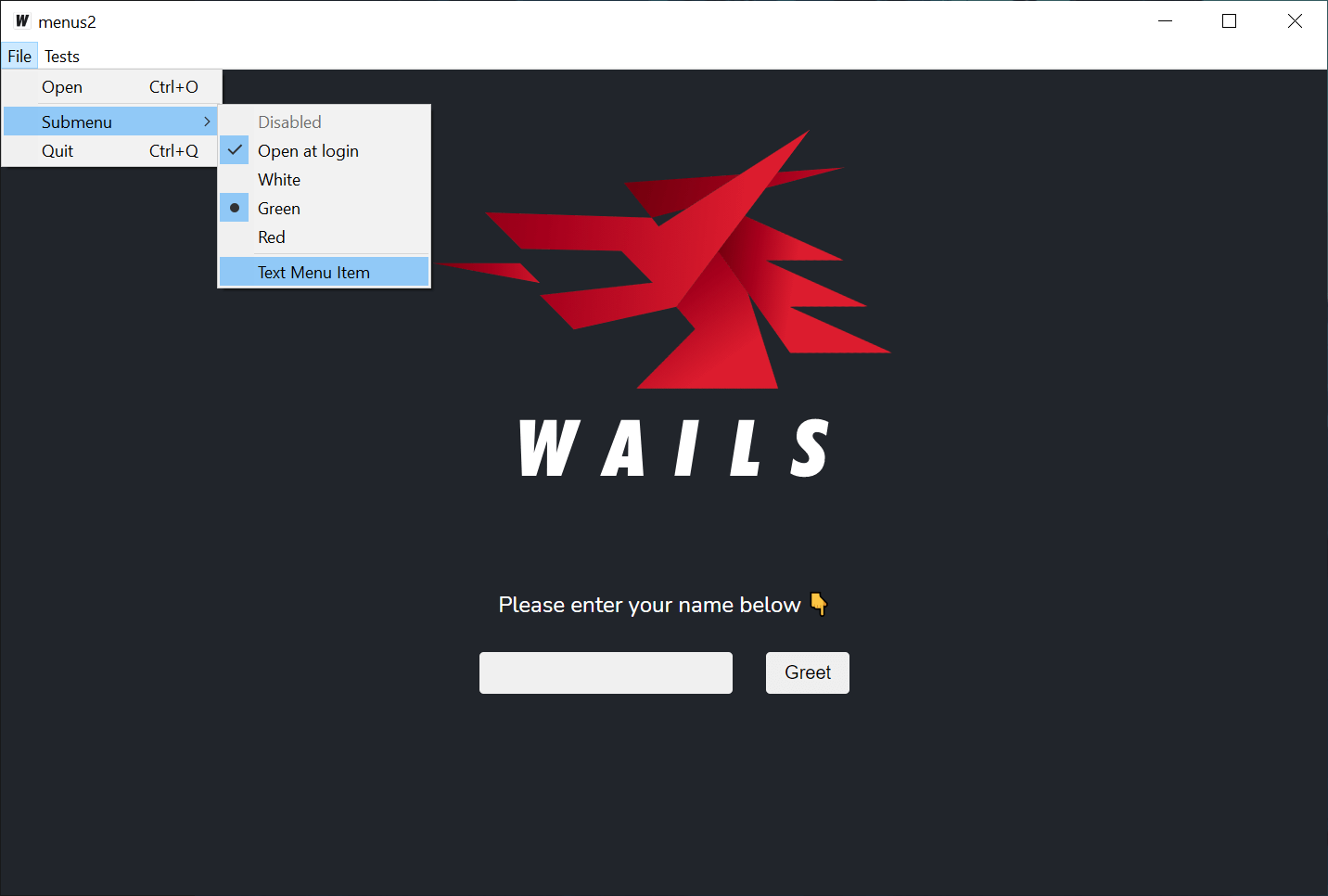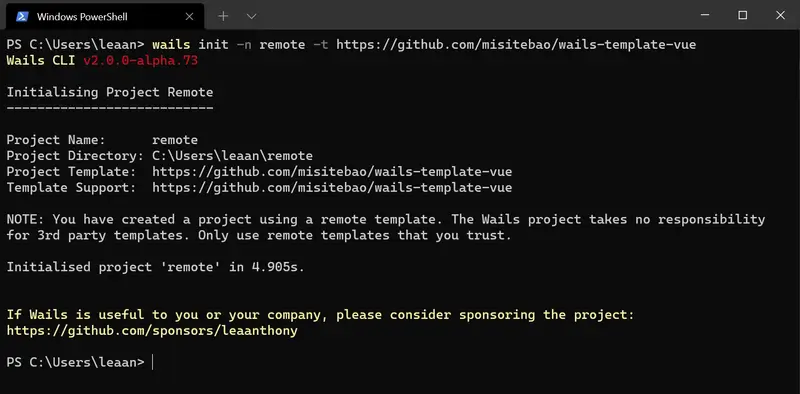I'm pleased to finally announce that Wails v2 is now in beta for Linux! It is somewhat ironic that the very first experiments with v2 was on Linux and yet it has ended up as the last release. That being said, the v2 we have today is very different from those first experiments. So without further ado, let's go over the new features:
New Features
There were a lot of requests for native menu support. Wails has finally got you covered. Application menus are now available and include support for most native menu features. This includes standard menu items, checkboxes, radio groups, submenus and separators.
There were a huge number of requests in v1 for the ability to have greater control of the window itself. I'm happy to announce that there's new runtime APIs specifically for this. It's feature-rich and supports multi-monitor configurations. There is also an improved dialogs API: Now, you can have modern, native dialogs with rich configuration to cater for all your dialog needs.
No requirement to bundle assets
A huge pain-point of v1 was the need to condense your entire application down to single JS & CSS files. I'm happy to announce that for v2, there is no requirement to bundle assets, in any way, shape or form. Want to load a local image? Use an <img> tag with a local src path. Want to use a cool font? Copy it in and add the path to it in your CSS.
Wow, that sounds like a webserver...
Yes, it works just like a webserver, except it isn't.
So how do I include my assets?
You just pass a single embed.FS that contains all your assets into your application configuration. They don't even need to be in the top directory - Wails will just work it out for you.
New Development Experience
Now that assets don't need to be bundled, it's enabled a whole new development experience. The new wails dev command will build and run your application, but instead of using the assets in the embed.FS, it loads them directly from disk.
It also provides the additional features:
- Hot reload - Any changes to frontend assets will trigger and auto reload of the application frontend
- Auto rebuild - Any changes to your Go code will rebuild and relaunch your application
In addition to this, a webserver will start on port 34115. This will serve your application to any browser that connects to it. All connected web browsers will respond to system events like hot reload on asset change.
In Go, we are used to dealing with structs in our applications. It's often useful to send structs to our frontend and use them as state in our application. In v1, this was a very manual process and a bit of a burden on the developer. I'm happy to announce that in v2, any application run in dev mode will automatically generate Typescript models for all structs that are input or output parameters to bound methods. This enables seamless interchange of data models between the two worlds.
In addition to this, another JS module is dynamically generated wrapping all your bound methods. This provides JSDoc for your methods, providing code completion and hinting in your IDE. It's really cool when you get data models auto-imported when hitting tab in an auto-generated module wrapping your Go code!
Remote Templates
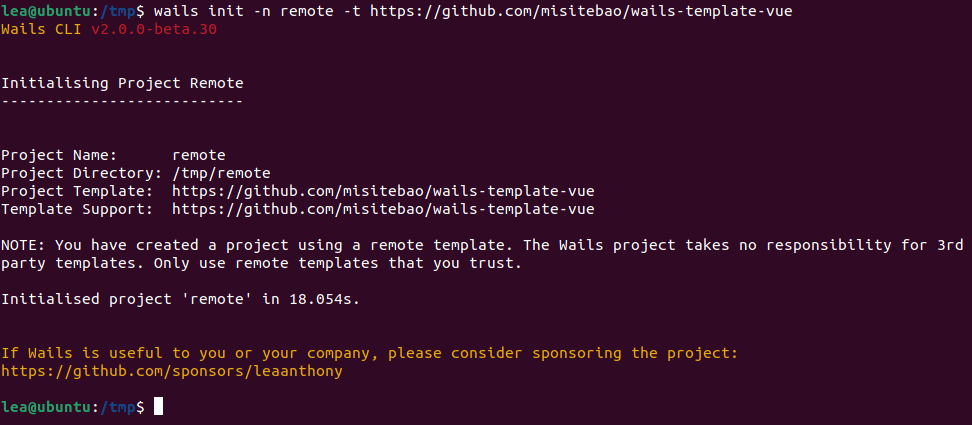
Getting an application up and running quickly was always a key goal for the Wails project. When we launched, we tried to cover a lot of the modern frameworks at the time: react, vue and angular. The world of frontend development is very opinionated, fast moving and hard to keep on top of! As a result, we found our base templates getting out of date pretty quickly and this caused a maintenance headache. It also meant that we didn't have cool modern templates for the latest and greatest tech stacks.
With v2, I wanted to empower the community by giving you the ability to create and host templates yourselves, rather than rely on the Wails project. So now you can create projects using community supported templates! I hope this will inspire developers to create a vibrant ecosystem of project templates. I'm really quite excited about what our developer community can create!
Cross Compilation to Windows
Because Wails v2 for Windows is pure Go, you can target Windows builds without docker.

In Conclusion
As I'd said in the Windows release notes, Wails v2 represents a new foundation for the project. The aim of this release is to get feedback on the new approach, and to iron out any bugs before a full release. Your input would be most welcome! Please direct any feedback to the v2 Beta discussion board.
Linux is hard to support. We expect there to be a number of quirks with the beta. Please help us to help you by filing detailed bug reports!
Finally, I'd like to give a special thank you to all the project sponsors whose support drive the project in many ways behind the scenes.
I look forward to seeing what people build with Wails in this next exciting phase of the project!
Lea.
PS: The v2 release isn't far off now!
PPS: If you or your company find Wails useful, please consider sponsoring the project. Thanks!

